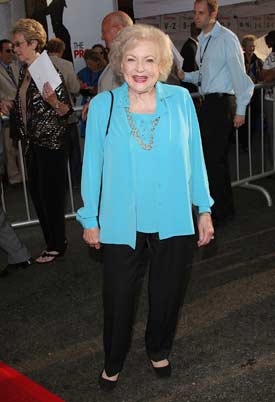The Strange Case Of Betty White
4/1/2014

Those who care about stereotypes of aging will always have Snickers with them.
The candy bar company—and its advertising agency, BBDO—climbed the summit of marketing in 2010, when a Super Bowl ad featured a then-88-year-old Betty White, representing what it was like for a young man to play hungry.
For those involved, the spot was a knockout: It went viral (hundreds of thousands of views and counting), got good buzz during the game, and revived White’s career.
But, four years after the fact, it still rankles senior advocates.
“I don’t single out the U.S. particularly,” Cornell University Assistant Professor Corinna Loeckenhoff says. “But there are just horrible ads, where, if you ran them about a culture or racial background, they would be out of business.”
The Snickers ad, of course, is Exhibit A in Loeckenhoff’s brief. “It says when you’re hungry, you’re not you—you’re an old woman. How bad does it get? This view is still accepted. And it shouldn’t be,” Loeckenhoff says.
It Got Their Attention
Still there are complexities (if not ironies) around the Snickers spot. First, of course, was White herself—most famous among post-baby boomers for her role in “The Golden Girls,” an ’80s sitcom that reveled in the varieties and richness of life for Women of a Certain Age.
After the Snickers spot, the children of baby boomers (collectively known in adspeak as “millennials”) took to social media and launched a campaign to get White to host "Saturday Night Live." It worked, and White’s boffo performance drew a bigger audience than the show had had in years.
Nor has White been relegated to the rubbish bin since the rekindling. She remains a fixture on television.
“She is darling,” Ohio University media Professor Karen Riggs says. “She is still kind of a Hollywood matron, and she was married to Mr. Password. She’s got those dimples, and she’s just precious, really.”
Riggs says that White is an outlier. Broadly, Riggs thinks, “the joke is still, really, on the elderly.”
“We see this extremely cute old lady with this salty tongue and a kind of in-your-face humor that appeals to the young,” Riggs says.
In other words, White is playing her age for laughs.
Media And The Elderly
And don’t expect that to change soon, Riggs says. Media has always had “a tenuous relationship” with the elderly. But millennials are well into adulthood now, and they’ve brought with them new media technology that is unraveling business models and panicking ad executives, Riggs says.

“Television is hemorrhaging audience. And, therefore, advertising dollars are really in danger for these traditional broadcast media,” she says. Meanwhile, millennials have some disposable income (not nearly as much as the baby boomers did), and social media “is a difficult game to play.”
That means that media companies and advertisers can more or less take the older generation for granted while they desperately pitch and woo the young ’uns.
“Representation across the medium spectrum is increasingly less enamored of aging,” Riggs says. “And it never was very good. Because now we know that the people who are consuming online information are millennials, or at least Gen-Xers.”
It’s true that baby boomers are the fastest-growing segment of social media customers (and even Betty White has more than 1 million followers on Twitter). But that’s only because the market is “saturated” with the young, Riggs says.
Not all is lost, though. The structure of modern media means that baby boomers and the elderly don’t have to have their culture dictated to them.
“These social networks aren’t the production of content, but they’re enabling the production of content that is much more in the hands of consumers themselves,” she says. “The good news is that older people are able to participate more in their own message. They’re able to be producers as well as consumers of Web 2.0 media.”
So a new slogan for the elderly as they march in front of the Web cams might be: You have nothing to lose but your stereotypes.